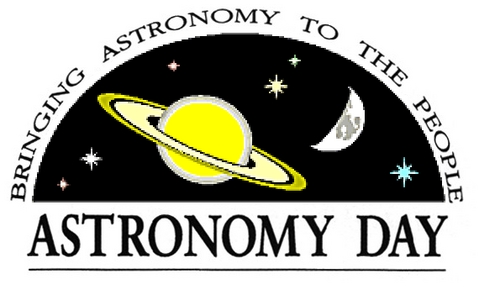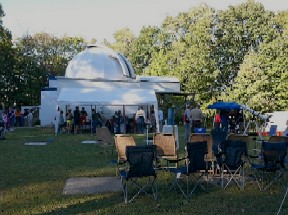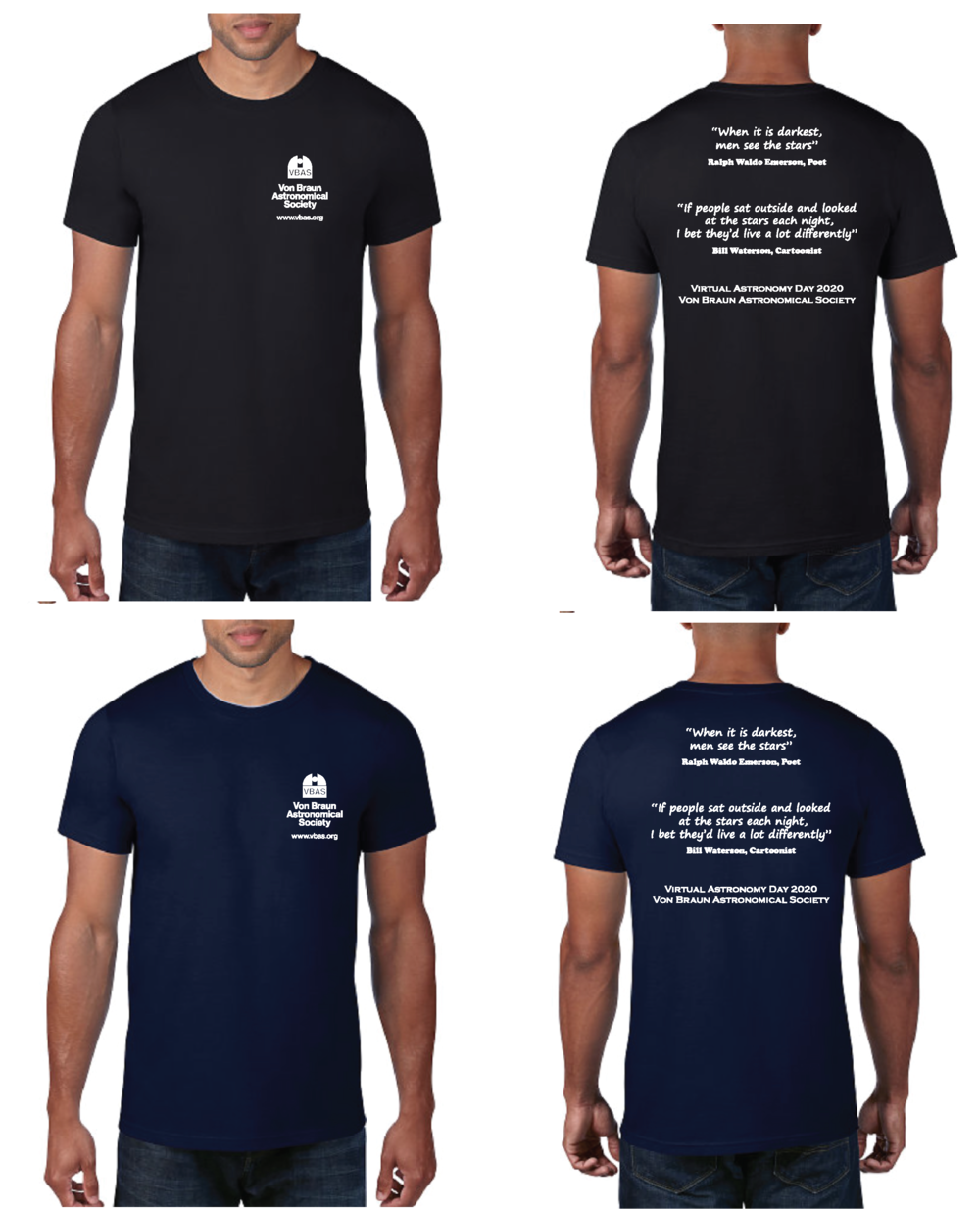Astronomy Day
Astronomy Day 2020

Theme: How to be an Amateur Astronomer
Virtual Astronomy Day will be Saturday, October 24, 2019 from 1:00PM-10:00PM as a webinar online
ASTRONOMY DAY COMBINES FAMILY FUN AND EDUCATION
On Saturday, October 24 from 1:00-10:00 PM, the Von Braun Astronomical Society will host its annual Astronomy Day online. To join visit this link. Events will include family fun workshops hosted by local science groups, planetarium shows and virtual telescope observing (weather permitting).
You can support VBAS Virtual Astronomy Day 2020 with your own society T-shirt! To purchase a T-shirt visit this link.
Astronomy Day 2018

Theme: Bringing Astronomy to the People
Astronomy Day will be Saturday, October 13, 2018 from 1:00 PM to 10:00 PM in Monte Sano State Park
ASTRONOMY DAY COMBINES FAMILY FUN AND EDUCATION
 On Saturday, October 13 from 1:00 - 10:00 PM, the Von Braun Astronomical Society will host its annual Astronomy Day at the VBAS facilities in Monte Sano State Park. For directions see this link. Events will include family fun activities hosted by local science groups, planetarium shows and telescope observing (weather permitting). All activities are free and open to the public.
On Saturday, October 13 from 1:00 - 10:00 PM, the Von Braun Astronomical Society will host its annual Astronomy Day at the VBAS facilities in Monte Sano State Park. For directions see this link. Events will include family fun activities hosted by local science groups, planetarium shows and telescope observing (weather permitting). All activities are free and open to the public.
Outdoor hands-on activities from 1:00 - 5:00 PM will be offered by VBAS, as well as local science enthusiasts. In the past we have had representatives from HAL5 (National Space Society Huntsville Chapter), U.S. Space & Rocket Center, and Lonnie Puterbaugh: Astronomy Van.
Short planetarium shows will allow guests to view the night sky indoors, while special solar telescopes outside will offer views of sunspots and solar flares. Visitors may tour both observatory facilities to hear stories about the construction and installation of the telescopes.
Evening activities will kick off at 7:00 PM with a presentation indoors by our keynote speaker, former NASA Astronaut, Brigadier General Robert Stewart, USA, Retired, who will speak on his experiences aboard the Space Shuttle. Following our keynote speaker we will have telescopes set up to view the night sky, weather permitting.
Tentative outdoor activities include: The Astronomy Channel, a mobile multimedia astronomy exhibit presented by Lonnie Puterbaugh of Nashville, TN, along with the following activities:
- *Astrophotography
- *Meteorites
- *Solar Telescopes
- *Observatory tours
- *Pin the Payload on International Space Station, and Make and Launch Your Own Paper Air Rocket presented by HAL5.
- *Dry Ice comet making
- *Astronomy Van
- *Environment of Space (vacuum jar experiments)
- *Food Truck
- *Telescope Workshop at 5:30 PM (Bring your telescope!)
- *And many more
Please note that outdoor activities are weather dependent and may be canceled with little or no notice due to rain or high winds.
Afternoon Mini-Planetarium Show Schedule (TENTATIVE):
- 1:00 The History of Space Flight - Mr. Michael Buford
- 2:00 Science of "The Martian"- Dr. Naveen Vetcha
- 3:00 Cosmic Connection to the Elements - Mr. John Weis
- 4:00 The Science (?) of Dr. Who - Ms. Mitzi Adams
Evening Show
7:00 PM Former NASA Astronaut, Brigadier General Robert Stewart, USA, Retired
General Stewart will be speaking about his personal experiences during two trips aboard the Space Shuttle as well as the training regimen required to prepare for those flights. If there is interest, he will answer questions about the aerodynamics and flight control aspects of flight from Mach 25 to Mach 0.
Speaker Bio from the NASA website:
Robert L. Stewart (Brigadier General, USA, Ret.) 
NASA Astronaut (former)
PERSONAL DATA: Born August 13, 1942, in Washington D.C. Married. Two children. His interests include woodworking, photography and skiing.
EDUCATION: Graduated from Hattiesburg High School, Hattiesburg, Mississippi, in 1960; received a bachelor of science degree in Mathematics from the University of Southern Mississippi in 1964, and a master of science in Aerospace Engineering from the University of Texas at Arlington, in 1972.
ORGANIZATIONS: Member of the Society of Experimental Test Pilots, Association of Space Explorers past member of Phi Eta Sigma, and the Scabbard and Blade (military honor society).
SPECIAL HONORS: Awarded Army Distinguished Service Medal, Defense Superior Service Medal, 2 Legion of Merit, 4 Distinguished Flying Crossed, a Bronze Star, a Meritorious Service Medal, 33 Air Medals, the Army Commendation Medal with Oak Leaf Cluster and "V" Device, 2 Purple Hearts, the National Defense Service Medal, the Armed Forces Expeditionary Medal, the U.S. and Vietnamese Vietnam Service Medals, and the Vietnamese Cross of Gallantry; also Army Aviation of the Year, 1984, AHS Feinberg Memorial Award, AIAA Oberth Award. Recipient of NASA Space Flight Medal (1984 & 1985).
EXPERIENCE: Stewart entered on active duty with the United States Army in May 1964 and was assigned as an air defense artillery director at the 32nd NORAD Region Headquarters (SAGE), Gunter Air Force Base, Alabama. In July 1966, after completing rotary wing training at Ft. Wolters, Texas, and Ft. Rucker, Alabama, he was designated an Army aviator. He flew 1,035 hours combat time from August 1966 to 1967, primarily as a fire team leader in the armed helicopter platoon of "A" Company, 101st Aviation Battalion (redesignated 336th Assault Helicopter Company). He was an instructor pilot at the U.S. Army Primary Helicopter School -- serving 1 year in the pre- solo/primary-1 phase of instruction and about 6 months as commander of methods of instruction flight III, training rated aviators to become instructor pilots. He is a graduate of the U.S. Army's Air Defense School's Air Defense Officers Advanced Course and Guided Missile Systems Officers Course. Stewart served in Seoul, Korea, from 1972 to 1973, with the 309th Aviation Battalion (Combat) as a battalion operations officer and battalion executive officer. He next attended the U.S. Naval Test Pilot School at Patuxent River, Maryland, completing the Rotary Wing Test Pilot Course in 1974, and was then assigned as an experimental test pilot to the U.S. Army Aviation Engineering Flight Activity at Edwards Air Force Base, California. His duties there included being chief of the integrated systems test division, as well as participating in engineering flight tests of UH-1 and AH-1 helicopters and U-21 and OV-1 fixed wing aircraft, serving as project officer and senior test pilot on the Hughes YAH-64 advanced attack helicopter during government competitive testing; and participation with Sikorsky Aircraft test pilots in developing an electronic automatic flight control system for the new Army transport helicopter -- the UH-60A Black Hawk.
He has military and civilian experience in 38 types of airplanes and helicopters and logged approximately 6,000 hours total flight time.
NASA EXPERIENCE: Stewart became a NASA Astronaut in August 1979. His technical duties in the astronaut office have included testing and evaluation of the entry flight control systems for STS-1 (the first Space Shuttle orbital mission), ascent abort procedures development, and payload coordination. He also served as support crewman for STS-4, and Ascent/Orbit CAPCOM for STS-5. He served as a mission specialist on STS-41B in 1984 and STS-51J in 1985, and has logged a total of 289 hours in space, including approximately 12 hours of EVA operations.
In 1986, while in training for his scheduled third flight to be know as 61-K, Col Stewart was selected by the Army for promotion to Brigadier General. Upon accepting this promotion General Stewart was reassigned from NASA to be the Deputy Commanding General, US Army Strategic Defense Command, in Huntsville, Alabama. In this capacity General Stewart managed research efforts in developing ballistic missile defense technology. In 1989, he was reassigned as the Director of Plans, US Space Command, Colorado Springs, CO. General Stewart retired from the Army in 1992 and currently makes his home in Woodland Park, Co. He is presently employed as Director, Advanced Programs, Nichols Research Corporation, Colorado Springs, CO.
SPACE FLIGHT EXPERIENCE: STS-41B Challenger (February 3-11, 1984) was launched from Kennedy Space Center, Florida, and returned to land there 8-days later. During the mission, Stewart and McCandless participated in two extravehicular activities (EVA's) to conduct first flight evaluations of the Manned Maneuvering Units (MMU's). These EVA's represented man's first untethered operations from a spacecraft in flight.
STS-51J Atlantis (October 3-7, 1985) was launched from Kennedy Space Center, Florida, and after 98 hours of orbital operations returned to land at Edwards Air Force Base, California. It was the second Space Shuttle Department of Defense mission, and the maiden voyage of Atlantis, the final Orbiter in the Shuttle fleet. During the mission he was responsible for a number of on-orbit activities.
VBAS Astronomy Day 2018 sponsored by:







